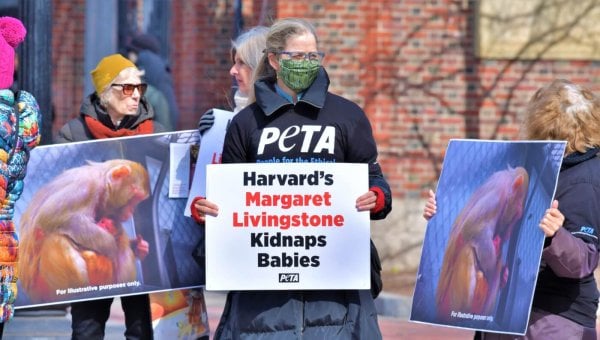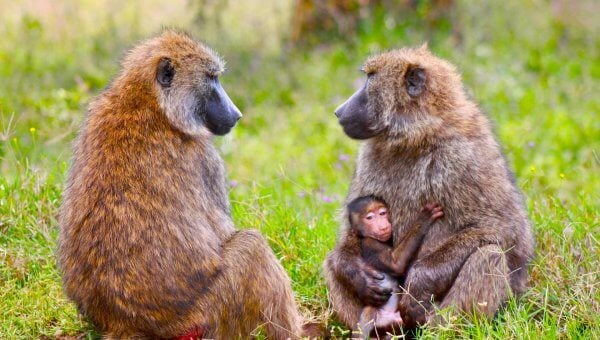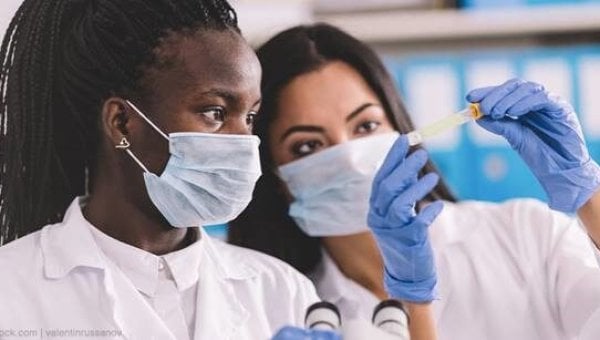Published by .
4 min read
The arrival of Mother’s Day (May 12) is an annual reminder that few things are as strong as the bond between mother and baby. This is true for all primates—not only humans.
Baby monkeys and apes seek contact with their mothers as soon as they’re born by clinging to them. Monkey mothers don’t leave their infants in nests. They carry them wherever they go.
Primate mothers form firm attachments with their newborns. Research has shown that mothers can distinguish their own babies from other infants even in the first few days after birth.
Fiercely protective monkey mothers shield their babies from enthusiastic members of their extended family (aka “troop”). Other members of the troop, excited as they may be about the birth of an infant, must wait for a closer look at them until Mama gives them the go-ahead.
The primate community takes an active role in helping to raise the new arrival. Macaques and most baboons live in female-bonded societies in which the elder females watch over first-time mothers and ensure that they get enough food. Female vervet monkeys help each other care for their infants. The females of most monkey species stay with their mothers for their entire lives, and when the mothers reach old age, their daughters take care of them.
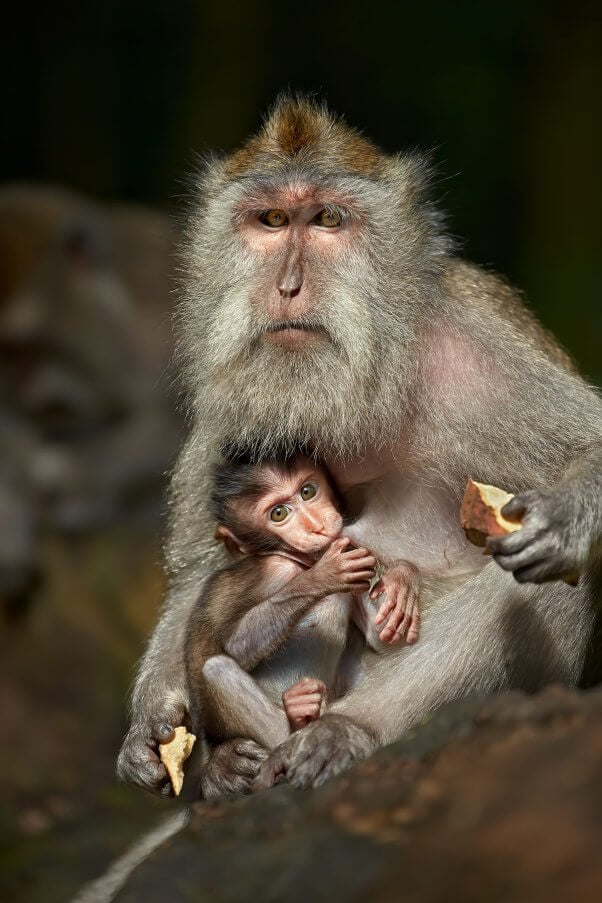
Most infant macaques and baboons depend on their mother’s care for an extended period of time, generally breastfeeding for at least a year. Older siblings are still dependent on their mother while she nurses her infant, as they’re still learning what to eat, where to sleep, and how to respond to crises.
The psychological needs of infant monkeys and their mothers are of little concern to animal experimenters. Some even take babies away from their mothers just to see how badly it affects them.
Legacy of Suffering
These cruel tests began with experimenter Harry Harlow, the co-inventor of two monkey torture devices, called the “pit of despair” and the “rape rack,” who is considered a “pioneer” of this type of torment. He tore infant macaques away from their mothers at birth, forced them to live alone or with a fake “surrogate mother” to cling to, and deprived some infants of all sensory or social input for up to a year, among other horrors.
Harlow’s experiments only illuminated the obvious: Primate babies need their mothers. Monkeys who are taken away from their mothers suffer their entire lives. They’re more prone to experiencing fear, anxiety, and depression.
One of Harlow’s students, Dr. John Gluck, has spent the latter part of his career fighting to end these barbaric experiments. But another student, Stephen Suomi, continued Harlow’s work—with his own demented twist.
Mothers and Babies in Peril
Harvard University experimenter Margaret Livingstone takes infants away from their mothers at birth, replacing them with inanimate Beanie Babies toys. She uses the infants in horrifying sensory deprivation experiments, in which some have had their eyes sewn shut for a year. Others are forced to wear goggles that create a strobe-light effect for their first 18 months or goggles that invert the world around them.
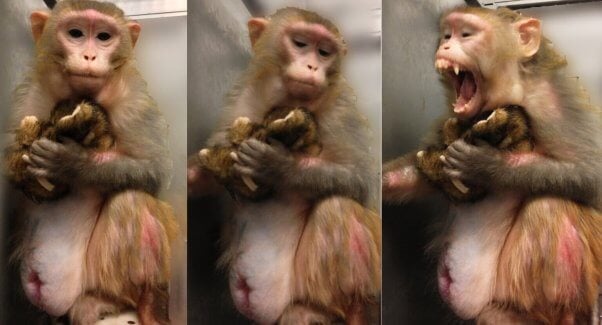
Livingstone then cuts into the babies’ skulls to implant electrodes and subjects them to tests to assess how badly their visual development has been damaged. The experiments are so foul that nearly 400 scientists and experts demanded that they stop.
Gerald Pepe and other experimenters at Eastern Virginia Medical School (EVMS) have ripped baby baboons out of their mother’s wombs for more than 40 years. Olive baboons trapped in this laboratory are impregnated, shot full of hormones and other chemicals, and their babies are surgically removed from them and dissected.
Some of the baboons had endured so many pregnancies and cesarean sections that the U.S. Department of Agriculture cited the school for failing to provide a scientific justification for the surgeries. PETA secured placement at a reputable sanctuary for some of the mothers, but experimenters killed them instead of relinquishing them.
What You Can Do
Please tell Harvard to shut down Livingstone’s laboratory and call for EVMS to close Pepe’s laboratory.
And if you reside in the U.S., please take additional action for animals by supporting PETA’s Research Modernization Deal, which outlines a comprehensive strategy for replacing all experiments on animals with more effective, human-relevant, non-animal methods.

